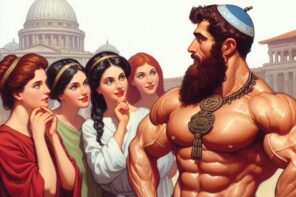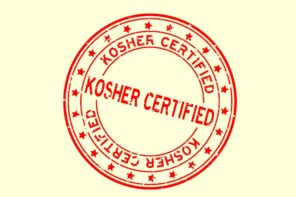In mid-July a very unusual murder suicide case caught the attention of the Israeli public, a public jaded by daily doses of heath and mayhem. The case involved two young men from the Haredi or ultra-Orthodox sector of Israel’s majority Jewish population. The bodies of both men, Eliyahu Aberman, nineteen years old, and his older friend and co-worker, Ohad Rosenberg, thirty-one, were found in Aberman’s car, which was parked on a Tel Aviv street. Gangland murders are not unknown in Tel Aviv, a city with large contending crime syndicates. But none of those syndicates have employed ultra-Orthodox gunmen, at least up to now. (Yiddish-speaking ultra-Orthodox gangsters appear in Michael Chabon’s The Yiddish Policemen’s Union, but that’s fiction.)
Who then were those two Haredi men found dead in Tel Aviv, and how had they died? It seemed that for a few days everyone in Israel wanted to know.
What Was He Doing with a Gun?
The police had found the gun in Aberman’s car and within a few days declared the case a murder-suicide. The ballistics evidence showed that Ohad Rosenberg had shot Eliyahu Aberman and then turned the gun on himself. As the news spread through the Israeli news media, Web sites and radio call-in shows were deluged with suggestions as to what this case was about.
The first reports speculated that the background story was a Haredi gay relationship gone bad. As on astute observer of ultra-Orthodox Judaism said a quarter of a century ago “homosexuality is the dirty little secret of the yeshiva world”—that is, of the single-sex school system in which Haredim are educated. Secular Israelis (perhaps half of the Jewish population) are fascinated by the sexual lives of the ultra-Orthodox, which they imagine to be radically different from their own. As homosexual behavior is forbidden by Rabbinic law, gay relationships within the ultra-Orthodox community are conducted in the deep shadows. Heterosexual relationships are, of course, supposed to be confined to marriage, and these relationships too fascinate secular Israeli readers. Books with titles like A Hole in the Sheet, which purport to “disclose all” about the sexual habits of Haredim, do well in the bookstores; and Israeli films in which Haredi characters appear inevitably focus on imagined sexual foibles of the ultra-Orthodox.
Rosenberg (who, at thirty–one was already ‘old’ for marriage by Haredi standards) had wanted to marry a young woman from Aberaman’s Hasidic community. In Hasidic communities there is serious vetting of the prospective spouse. Rosenberg failed the vetting process and blamed Aberman’s family. At Rosenberg’s funeral his friends told an Haaretz reporter that Rosenberg “carried a vendetta against the Aberman family and maintained that they were trying to ruin his life.” Interviewed after the funeral, Rosenberg’s boss stated that “he told me that the would-be bride’s family did a thorough check on him with the Hasidic Rabbis and that negative things were said about him.”
There was also a property issue involved in the dispute between the two Haredi men. Rosenberg owned a car which he had lent to Aberman. The younger man returned the care in what Rosenberg thought was bad condition and an acrimonious argument ensued.
Within the ultra-Orthodox communities in Israel and elsewhere there are many ways to mediate and adjudicate disputes. Disputes are often taken to local and somewhat informal Rabbinic courts. The Haredim avoid the Israeli court system and tend to rely on their own Rabbinic authorities. In comparison to the rough and tumble texture of daily life in Israel, the dispute between Rosenberg and Aberman seems mild. Why then did it break out into homicidal rage and suicidal despair? Yes, Rosenberg did seem unhinged and paranoid—but what was he doing with a gun? Here sociology is as important as psychology in helping us understand this grisly story. The answers lie in the story of the transformation of Haredi life in the State of Israel.
Trained to Use a Gun
There are approximately 400,000 Haredi Jews in Israel. For those not familiar with the complexities of Israeli life and politics, some population figures, distinctions, and differences are in order. Israel has 7.2 million citizens, 80% of whom are Jewish and 20% of whom are Arab—predominantly Muslim. Within Israel proper, both Jews and Arabs are citizens. Also living in Israel proper are 500,000 so-called “guest workers” from Africa, Asia, and Eastern Europe. Outside of “Israel proper” lie the territories (variously modified with the adjectives “liberated,” “occupied,” or “administered”). In these territories (the Golan Heights, the West Bank, the Gaza Strip), Israel has varying degrees of control over the Palestinian population (approximately 3.5 million people) and over the Jewish settler population (between 250,000 and 500,000 people, depending on whether one counts those Jews settled in what was until 1967 Arab Jerusalem.) In the first decades after the June 1967 War, the ideological spearhead of the Jewish settler movement was Gush Emunim (the bloc of the faithful). These settlers were religious Zionists: Modern Orthodox Jews adhering to a worldview that saw Zionism and Judaism as inseparable. They are not the Haredi (“Trembling”) Jews of ultra-Orthodoxy.
Ultra-Orthodox life in the Jewish diaspora had by definition been pacifistic. Traditional Jews who resisted modernity did not join armies, hunt, or otherwise take up arms. But Ohad Rosenberg, who murdered Eliyau Aberman on a Tel Aviv street and then turned his gun on himself, was trained to use a gun. In fact he had been working as a security guard. Among Israeli Jews, for whom there is universal military conscription, this type of work would not have been at all unusual, but among the ultra-Orthodox it was striking. For under Israeli law the ultra-Orthodox are exempt from the draft. All Haredi men and women are free from the responsibility of spending years in the army. In the 1950s Israel’s first Prime Minister, David Ben Gurion, granted this exemption to the then-small ultra-Orthodox population of the new state.
Not that Haredim are strangers to one type of violence: that of violent demonstrations against government policies. These may be against autopsies, cremations, Sabbath desecration, etc.—and against the “provocations of women dressed immodestly” walking through their neighborhoods. This summer there were violent demonstrations against the removal of bones from a construction site for a New Emergency room at Ashkelon’s Barzilay Hospital. Speaking of this type of Haredi violence, Yossi Sarid wrote in Haaretz: “In every other country they (the Haredim) obey the state authorities. Only here, in the state they made no effort to establish and no effort to maintain, are they a law unto themselves.”
Ultra-Orthodox in the Military
It was only in the 1990s that the possibility of army enlistment opened up to those Haredi young men who wished to stay in the ultra-Orthodox fold and yet wanted do military service. A special unit, the Nahal Haredi, drew some enlistees. Some of the Haredi Rabbis supported this idea, as in that unit the men would not be open to the “pernicious outside influences” of Israeli secular society.
In the mid-1990s, another development brought the Haredim into closer contact with the Israeli Jewish mainstream. This was the effect of the Palestinian suicide bombings that followed the collapse of the Olso accords. These horrific bombings on the home front created a feeling of solidarity that both supplemented and transcended the solidarity generated by shared army experience. Haredim, with few exceptions, had not been at the battle front during Israel’s wars and border actions. But they did share the terror of urban bomb threat.
As the streets of Israeli cities became the home front, Israeli Jewish society (to some extent transcending its ethnic, social, and religious divisions) became even more unified and militarized. How then were the Haredim to express their solidarity with their non-Haredi fellow Israeli Jews? And how might they deflect and counter the resentment expressed by that majority of Israeli Jews whose children, female and male, do serve in the army? The answer lies in the formation of “Zaka,” a volunteer organization whose name is the acronym for “Disaster Victim Identification.” First organized in Jerusalem, members of Zaka teams assist first–aid workers, identify victims, and most dramatically work assiduously to gather all body parts and blood of the victims—and bombers. This is in keeping with Jewish (and Muslim) law, which demands that all body parts and bodily fluids be brought to burial, and that burial be conducted as soon as possible.
At the time of their deaths, both Ohad Rosenberg and Eliyahu Aberman had been working for Zaka; it was in the ranks of that organization that they met. In the fifteen years since its 1995 founding Zaka had gained the respect of the Israeli public (both Jewish and Arab) and of international disaster relief organizations. These have either used Zaka’s direct services of have emulated their techniques in their own relief teams. The Israeli police force now teats the Zaka volunteers and staffers as colleagues. And the Israeli government has recognized a year of service to Zaka as a form of Shnat Sherut—national service.
This all sounds very positive, doesn’t it? Except for one thing: by bringing young Haredi men into contact with the permanent emergency that is Israeli civil society, Zaka and the Israeli Army have brought these young men into contact with the world of physical violence, aggression, and gun use. Hitherto protected by their insularity and separateness from Israeli society, these ultra-Orthodox males are becoming socialized to Israeli norms. And they and their community are paying a heavy price for that socialization.




